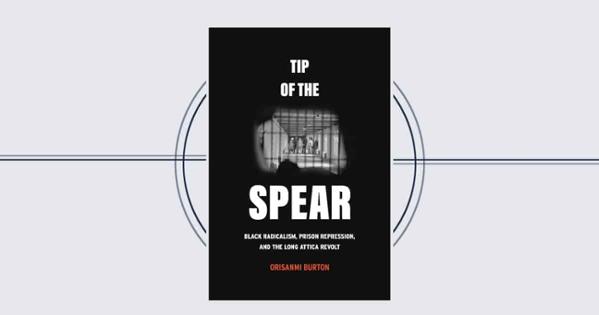‘An Epochal Act of Abolitionist Worldmaking’: New Book Recounts Attica Uprising

The Attica prison revolt in New York state took place over four days in September 1971, after 1,300 prisoners seized control of the prison and took 43 guards as hostages. In the midst of prisoners’ negotiations with officials, the revolt came to a sudden end. New York Gov. Nelson A. Rockefeller sent in a force to regain control. In the bloody retaking of Attica, 29 rebels and 10 hostages died, and more than 100 people were wounded. In the aftermath, only prisoners were prosecuted and held to account.
History recounts that prisoners were fighting against dilapidated and inhumane conditions inside the prison walls. But the story of Attica extends further. It’s a civil rights struggle for equality, humanity and transformation of the U.S. legal system concerning speedy trials, hearings, fair bail processes and more, according to Orisanmi Burton, assistant professor of anthropology in the College of Arts and Sciences, a 2021 Freedom Scholar and member of AU’s Antiracist Research & Policy Center.
Burton’s new book, “Tip of the Spear: Black Radicalism, Prison Repression and the Long Attica Revolt,” centers this struggle and the Attica prisoners. The book’s many accolades include selection as one of 11 books of the year by The Innocence Project and a pick for Inquest’s 2023 year-end reading list.
Mining new archives and new oral histories he conducted with prisoners and their family members, Burton creates a picture of Attica’s “significance as an epochal act of abolitionist worldmaking.” Attica’s influence is found in today’s movement for prison abolition. For example, the leaders of the National Prison Strike of 2016 described their struggle as an extension of Attica, Burton writes in an essay for Abolition Journal.
Below are some of the themes explored in Tip of the Spear.
The Long Attica Revolt. The book places the Attica uprising in the context of prison revolts that preceded and followed it. Burton writes about the October 1970 prison rebellion at the Queens House of Detention in Long Island and other rebellions across New York City. The Long Attica Revolt describes Attica and at least 13 months of ongoing agitation and uprisings following Attica, dispersed across multiple jails and prisons across the state of New York, other states in the U.S., and, to some extent, internationally. According to one study Burton cites, 48 prisons erupted in revolt in 1972, the most in a single year in U.S. history up to that point.
Language matters. Prisoners are captives and those involved in the uprising are rebels. Attica was not a riot -- it was a rebellion and a revolution. Burton writes of historical accounts of Black insurgency using terms like “resistance” or “self-defense” or “violence.” Examining the language of the rebels, he shows, reveals militancy, such as referring to the struggle as engaging with “the brutal regime.” “Prison reforms” is a creation by the state. The concept of reforms, as led by the state, should not be confused with the goals of the prison abolition movement.
Prison as a site of war. Burton situates Attica as part of a larger struggle against prison repression. It intersected with the radical ideology of the resistance groups Black Liberation Army and Black Panther Party of the time. Under founder and former Federal Bureau of Investigation Director J. Edgar Hoover, “Black Nationalist-Hate Groups” was one project of COINTELPRO, the counterintelligence program involved in covert and illegal activities to disrupt political groups deemed working against the interests of the U.S. While much today is known about the workings of COINTELPRO to infiltrate Black radical organizations, Burton writes, less is known about how COINTELPRO programs connected to prisons. Rebels maintained both informal and formal links to the BLA and BPP. “It can scarcely be a coincidence that a massive uptick in prison rebellions emerged amid the state’s intensified campaign to criminalize Black resistance,” Burton writes.
Details from never-before published archives and oral histories. In addition to oral histories with rebels, Burton received a trove of materials from Black Panther Party and Black Liberation Army political prisoner Dhoruba bin-Wahad and an attorney, Robert J. Boyle. bin-Wahad, exonerated from a conviction for the attempted murder of two New York police officers in 1971, was freed in 1990 after it was proven the prosecution withheld exculpatory evidence during his trial.
Transnational ties. Burton traces the internationalism of the revolt and prisoners’ support for and ties to anticolonial movements of the time, especially those happening in countries in Asia and in Cuba. “These expressions of transnational affinity, solidarity, and common interest did not evolve into a coalition capable of attacking U.S. empire from within and beyond its borders…Yet the mere existence of these revolutionary demands, aspirations, and conspiratorial plans unsettles the rights-based framework that has dominated the narration of Attica for the past fifty years,” Burton writes.
